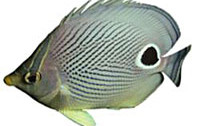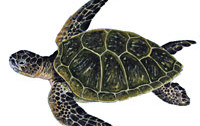
Chaetodontidae
The butterflyfish family is a large and well known group of tropical species. They are mostly of small size with oval-shaped bodies which are deep and greatly compressed. The dorsal fin is continuos along the back and is not divided between the anterior spinous part and the spineless posterior portion. The tail may be rounded, truncated, or emarginated on its posterior border, but is never forked. The head bears a small mouth which contains flexible, brush-like or comb-like teeth. Within this family some members have a sharp spine on the lower back corner of the preopercle. These are true angel fishes, and with the presence of this spine can be distinguished and separated from true Butterfly Fishes, placing them in a separate family, Pomacanthidae.
Butterflyfish a...
Read More







Social Profiles